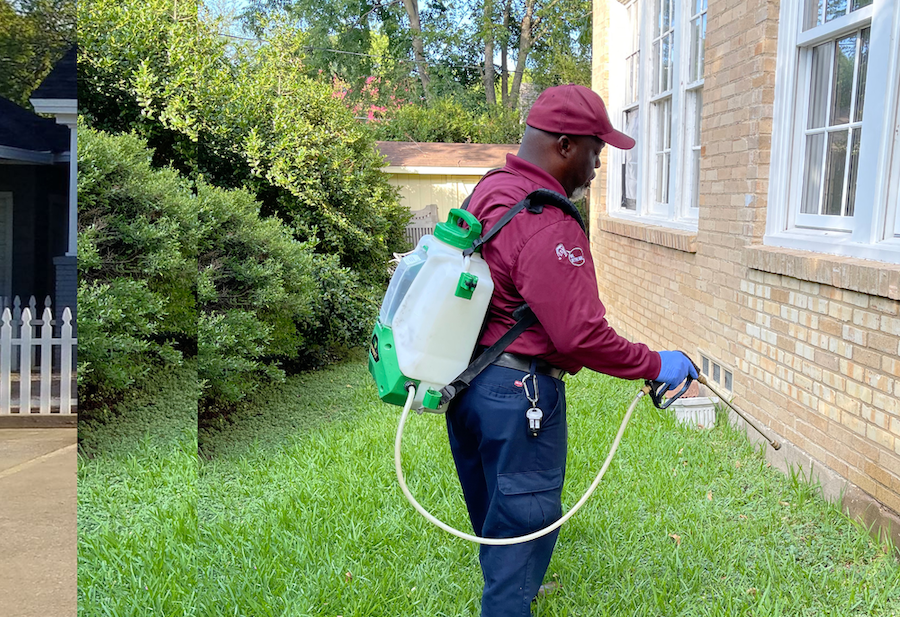Effective Pest Control Providers: An In-Depth Look at Elimination Techniques and Prevention Measures
In the realm of bug control solutions, the successful management of problems calls for a precise technique that integrates various methods and actions for both obliteration and avoidance. From Integrated Parasite Monitoring (IPM) techniques that prioritize lasting remedies to chemical extermination strategies designed for targeted removal, the toolbox versus insects is diverse and substantial.

Integrated Bug Management (IPM) Methods
Integrated Parasite Monitoring (IPM) Approaches incorporate a thorough method to pest control that concentrates on monitoring, avoidance, and control techniques to effectively manage pest populaces. By incorporating different methods, IPM intends to lessen the effect of insects while additionally decreasing the dependence on chemical pesticides. Prevention lies at the core of IPM, emphasizing practices like appropriate sanitation, maintenance of hygiene, and sealing access factors to hinder insects from infesting structures.
Chemical Extermination Strategies
Chemical elimination techniques are typically used in bug control services to successfully eliminate bug populations that present a hazard to human health and wellness and residential property. These methods include using various chemical materials particularly developed to target and get rid of insects such as bugs, rats, and various other undesirable creatures. The application of chemicals, pesticides, rodenticides, and other chemical agents is very carefully regulated to make certain maximum efficiency while lessening threats to human beings, pets, and the atmosphere.
Among the crucial benefits of chemical elimination methods is their capability to provide quick and targeted results, making them specifically beneficial in instances of serious infestations or immediate bug control requirements - a1 pest control portland bed bugs. Nevertheless, it is vital to stress the relevance of proper handling, application, and disposal of these chemical products to avoid unintentional injury
Moreover, integrated pest administration (IPM) techniques often incorporate chemical elimination methods with various other techniques such as sanitation, environment modification, and biological controls to develop a sustainable and comprehensive bug control approach. By incorporating chemical elimination methods carefully within an IPM structure, pest control solutions can effectively take care of insect populations while minimizing prospective threats to human wellness and the setting.
Biological Insect Control Methods
Using natural killers and bloodsuckers to handle pest populaces is a sustainable technique recognized as biological insect control. portland exterminators a1 for bed bugs. One common biological control technique involves presenting natural adversaries of the target bug varieties, such as ladybugs for aphid control or this website nematodes for termite problems.
One more reliable organic control approach is using microbial insecticides. These are naturally taking place microbes, such as fungis, microorganisms, and viruses, that specifically target and contaminate certain insect types. By using these microbial representatives, insect populations can be successfully minimized without creating or damaging helpful organisms injury to the setting.
Physical Pest Avoidance Measures
Applying physical bug prevention steps includes making use of barriers and structural modifications to discourage parasites from getting in or infesting a residential or commercial property (a1 pest control portland bed bugs). One effective technique is securing all prospective entrance points such as gaps around doors, windows, and utility penetrations. Mounting door sweeps, displays on windows, and sealing fractures in the structure can help prevent insects like bugs and rodents from getting inside. Additionally, maintaining a tidy and clutter-free environment is essential as insects are brought in to food resources and hiding places. Frequently checking and fixing any broken screens, vents, or roofing floor tiles can additionally help in keeping pests out.
Another physical avoidance measure is the use of obstacles like secure fencing to keep bigger insects such as raccoons or deer far from the property. Setting up mesh or wire screens around yards can protect plants from being damaged by bugs. Proper waste administration, including securing wastebasket with tight-fitting covers, is vital in deterring pests like raccoons, rodents, and bugs. By carrying out these physical parasite avoidance actions, homeowner can significantly lower the risk of bug invasions and the damage they can create.
Expert Parasite Inspection Procedures
Conducting extensive and methodical pest evaluations is an essential aspect of professional insect management methods. Professional parasite inspectors are educated to diligently take a look at residential properties termite stakes for indications of invasions, determining pest species, entry points, and favorable problems.

Conclusion
To conclude, efficient bug control solutions utilize a range of techniques, including Integrated Pest Administration methods, chemical elimination approaches, biological controls, and physical prevention procedures. Expert parasite inspection procedures play a critical role in recognizing and addressing pest concerns in a timely way. By applying a combination of these strategies, homeowner can efficiently stop and take care of insect invasions.
From Integrated Parasite Administration (IPM) strategies that prioritize lasting services to chemical extermination strategies developed for targeted elimination, the collection against bugs is large and multifaceted.Integrated Insect Monitoring (IPM) Strategies include an extensive technique to pest control that focuses on control, monitoring, and prevention visit their website approaches to efficiently take care of pest populaces.Chemical elimination strategies are typically utilized in parasite control services to effectively eliminate bug populations that posture a threat to human wellness and property.Utilizing natural killers and parasites to manage pest populaces is a sustainable approach understood as biological parasite control.In conclusion, effective insect control services utilize a selection of techniques, consisting of Integrated Insect Management techniques, chemical extermination approaches, biological controls, and physical prevention procedures.